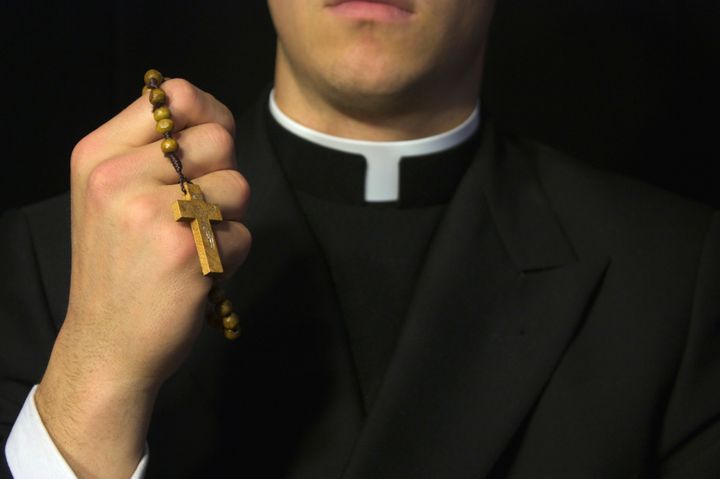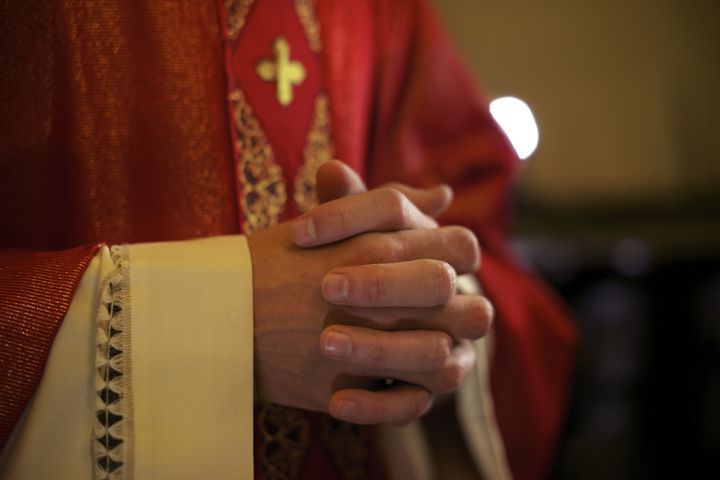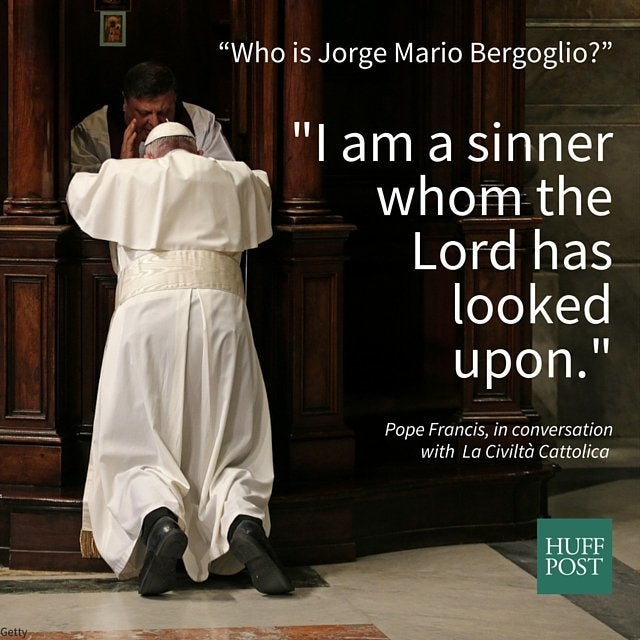For decades, stories about clerical sexual abuse committed by Pennsylvania Catholic priests were reportedly locked away in the church’s secret archives.
These old secrets exploded into the light Tuesday with the publication of a grand jury report into six of Pennsylvania’s eight Roman Catholic dioceses.
The jurors’ 884-page report allowed Pennsylvania Catholics to finally grasp the extent of the abuse ― and cover-up ― in six dioceses: Allentown, Erie, Greensburg, Harrisburg, Pittsburgh and Scranton. Over the course of two years, jurors identified 301 “predator priests” and more than 1,000 victims.
Jurors heard stories of boys and girls being groped. They heard about cases of kids becoming victims of child pornography, being made to masturbate with assailants, and being raped orally, vaginally and anally.
Underpinning the horrific alleged crimes in the report are hundreds of pages of documents from the church’s secret archives that the jurors claim show that senior church officials knew the abuse was happening and failed to act properly. Catholic leaders, including former bishops, actively worked to protect abusers and the church’s public reputation, while brushing aside victims’ reports, the jurors claim.
The six dioceses and the accused priests were allowed to include their own responses to these claims at the end of the grand jury’s report. Some priests attached rebuttals, saying that the report included inaccuracies. About two dozen people named in the report petitioned to have their names redacted, claiming their right to due process would be violated if they were identified. The state Supreme Court plans to consider these individuals’ claims in September to determine if those redacted names should be revealed.
The majority of the alleged perpetrators may never be brought to justice. Many are dead, while in some cases, the statute of limitations for bringing criminal charges has expired. That’s why the jurors insisted on naming accused priests and their bishops, and describing the abuse in detail.
“We are going to shine a light on their conduct, because that is what the victims deserve,” the report says.
To highlight the scope of the issue and the need for change, here are just some of the shocking cases of abuse and alleged cover-up documented in Tuesday’s landmark investigation.

The Priest Who Allegedly Arranged An Abortion For His Victim
The grand jury reports that a priest in the Diocese of Scranton, Thomas Skotek, assaulted a young girl from 1980 to 1985. The priest allegedly raped her, got her pregnant and helped arrange an abortion.
Documents in the church’s archives suggest that the diocese’s bishop was “fully aware” of the priest’s actions by 1986. Skotek resigned and was sent to a Catholic treatment center for clergy.
In a 1986 letter obtained by the grand jury, the bishop of Scranton expressed his condolences to the accused priest.
“This is a very difficult time in your life and I realize how upset you are. I too share your grief. How I wish it were not necessary to take this step,” the former Bishop James Timlin wrote in the letter to Skotek. “With the help of God, who never abandons us and who is always near when we need Him, this too will pass away, and all will be able to pick up and go on living.”
One year later, in 1987, Skotek was reassigned to another Pennsylvania church.
In 1989, the young woman was asked to sign a confidentiality agreement in exchange for a financial settlement.
That same year, Timlin sent a letter to the Vatican acknowledging that the priest had helped arrange an abortion. Catholic canon law deems those who cooperate in a completed abortion as “irregular,” which means they could be prevented from carrying out priestly duties. This bishop asked Rome to issue a dispensation for the priest, which is an exemption from an existing canon law.
“The Grand Jury noted that the focus of Timlin’s letter seemed to exclusively address the procurement of the abortion with little concern that Skotek had impregnated a child,” the report reads.
The priest continued in active ministry until 2002.
Timlin, now 91 and a bishop emeritus, responded to the grand jury report through his lawyer. While acknowledging that his efforts to respond to child sexual abuse in the diocese were “imperfect,” Timlin said he had acted with his best judgment, according to the medical standards of the time. In 1993, Timlin said, he established an internal review board in the diocese to help review child abuse cases.
“While not perfect, the Diocese of Scranton was in the vanguard of many religious organizations addressing the serious concerns related to child sexual abuse by members of the clergy,” the bishop’s statement said.
The Alleged Ring Of Predatory Priests Who Groomed Their Victims With Gold Crosses
The grand jury claims it uncovered a “ring of predatory priests” that operated within the Diocese of Pittsburgh. The jurors claim the ring created child pornography on diocesan property and used “whips, violence and sadism” in raping their victims. The ring apparently shared information about victims and even exchanged victims among themselves.
One man testified to the grand jury that the group of Pittsburgh priests once invited him to a parish rectory and asked him to get on a bed and remove his shirt, pants and underwear. The priests allegedly took photos of the victim, all the while claiming to make an “analogy to the image of Christ on the cross” and that the photos would be used to create religious statues.
The same victim also testified that the ring of priests groomed their victims with gifts. The priests would mark their “favorite boys” with gold cross necklaces.
″[The crosses] were a signal to other predators that the children had been desensitized to sexual abuse and were optimal targets for further victimization,” the grand jury wrote in its report.
The Priest Who Allegedly Rinsed His Victim’s Mouth With Holy Water
The grand jury reports that a priest in the Diocese of Allentown sexually abused a young boy from 1981 to 1983. The victim reported the abuse to the diocese in 2011, and the diocese alerted local police.
The victim told police that the priest forced him to perform oral sex and also orally raped the boy. The victim claims that afterward, the priest would squirt holy water from a bottle into the victim’s mouth “to purify him,” the report states.
Since the statute of limitations had expired, no charges were brought against the priest. The priest, who has denied the accusations, served in churches until his retirement. As late as 2009, he was assisting with a local parish in Florida.
The Priest Who Confessed Abuse But Continued To Serve
In 1982, the Diocese of Allentown received a complaint from a victim’s father saying that a priest, Michael S. Lawrence, had sexually abused his 12-year-old son. When church officials confronted the priest, he reportedly confirmed the father’s account and said, “Please help me. I sexually molested a young boy.”
Church records obtained by the grand jury indicate that Lawrence was sent to a treatment center for Catholic clergy, where a doctor told church officials that the victim’s family should be given time to “ventilate” and that “the experience will not necessarily be a horrendous trauma” for the boy.
Two years later, Lawrence was assigned to a high school to teach religion classes. He wasn’t removed from active ministry until 1987. He continued to serve in a Diocesan Tribunal until 2002, when journalists at the Boston Globe brought national attention to the issue of child abuse in the Roman Catholic Church. Lawrence retired that year and died in April 2015.
The Priest Whose Superiors Had His Back
Jurors claim that some former church officials in the Diocese of Pittsburgh took pains to defend and reassign the Rev. Richard Zula, who was sentenced to prison in 1990 for child abuse.
In 1987, a church official claimed one of the Zula’s victims, a 15-year-old girl, had “pursued” the priest and “literally seduced” him into a relationship.
Zula was arrested on child abuse charges in 1988. The diocese then started receiving additional complaints against the priest.
While the priest awaited sentencing, a doctor procured by the diocese in 1989 wrote a psychological evaluation of Zula for the court. In the evaluation, the doctor claimed that Zula had admitted to “mutual masturbation and fellatio with one sixteen year male” but only because “the boy first suggested sexual behaviors.” The priest admitted to “mild sado-masochistic” behaviors, the doctor wrote, but “has never exhibited psychotic symptoms or any disturbance to his thinking and reasoning.”
The grand jury claims Zula received a check of more than $11,000 in back pay from the Diocese of Pittsburgh after his early release from prison in 1992. After much back and forth about future payments, in 1996, the diocese entered an agreement with the priest that guaranteed continued payments but prohibited him from seeking future assignments within the diocese.
Zula died last year.
In its response to the grand jury report, the Diocese of Pittsburgh said it is required by canon law to provide some level of support to all clergy ― even those convicted of crimes. The diocese also stated, “At no time did the Diocese of Pittsburgh advocate for a lighter sentence for Zula, nor did it request that a psychiatric report be prepared or submitted on Zula’s behalf for sentencing purposes.”

The Priest Who Allegedly Asked His Victim To Confess The Abuse
The grand jury’s investigation has led to the arrests of two priests on child sexual abuse charges. One of them is the Rev. David Poulson, who is facing charges of indecent assault and child endangerment after being accused of abusing at least two boys in incidents that date back to 2002.
Poulson allegedly assaulted one of the victims, a former altar boy, more than 20 times in church rectories. The child was also asked to make a formal confession ― to Poulson ― to receive priestly absolution for the abuse.
“This was the ultimate betrayal and manipulation by Poulson,” Pennsylvania Attorney General Josh Shapiro said in a news release earlier this year. “He used the tools of the priesthood to further his abuse.”
Shapiro says the Diocese of Erie knew about the priest’s abusive tendencies since at least 2010 but did nothing to report Poulson to the authorities until 2016, when it responded to a subpoena from the grand jury.
The bishop of Erie disputes this timeline.
During its investigation, the grand jury heard from nine other men who told them that Poulson plied them with “gifts, cash, dinners and alcohol” and “joked” about his sexual preference for young boys.
The Priest Accused Of Raping A Child In The Hospital
The Diocese of Harrisburg received a report in 1991 about a girl who was abused by a priest in the 1960s and 1970s. The woman claimed that when she was 7 years old, the priest raped her in a hospital room while she was recovering from having her tonsils removed. The woman told the diocese that the priest raped her two more times when she was a teenager, according to a church document uncovered by the grand jury.
Diocesan records indicate that the priest confessed to the sexual abuse of this victim in 1991. He was revoked of his priestly duties.
The Priest Who Continued In Ministry After Impregnating A Teenager
In the 1950s, the Diocese of Greensburg learned that a newly ordained priest, Raymond Lukac, had engaged in a relationship with a 17-year-old girl. The priest eloped with her and got married when the girl was 18. Months later, after attending a treatment center for Catholic priests, he divorced her. Church documents indicate that the young woman gave birth to Lukac’s child.
“Despite having sex with a minor, despite fathering a child, despite being married and being divorced, the priest was permitted to stay in ministry thanks to the diocese’s efforts to find a ‘benevolent bishop’ in another state willing to take him on,” the grand jury reports.
The Priest Who Allegedly Groomed Children For Oral Sex
The grand jury claims that numerous sexual abuse allegation dogged a priest who remained in the Diocese of Greensburg between 1976 and 2002. Jurors learned that several elementary to middle school children told the diocese in 1986 that the priest had spoken to them about masturbation in a religious education class. The priest apparently described to the kids how Jesus’ mother, Mary, had to “bite off the cord” and “lick” Jesus after he was born to clean him off. Jurors described this behavior as “grooming” the students for oral sex.
In 1986, the diocese was notified that local police were investigating this priest for sexual contact with minors ― although the grand jury found no records to indicate that the priest was prosecuted as a result of that investigation.
After being sent to a treatment center, the priest was assigned to various parishes and ministries until 2002, when he was removed from the priesthood. Internal diocesan documents indicate that at least one other victim came forward with an abuse complaint before 2002.

The Priest Who Abused Five Sisters In The Same Family
The report says that one priest in the Diocese of Harrisburg, Augustine Giella, sexually abused five sisters from the same family, starting around 1982. The priest also reportedly collected samples of the young girls’ urine, pubic hair and menstrual blood. During a police raid, these samples were recovered from Giella’s house, along with child pornography. Giella was arrested in 1992 and confessed to his crimes. He died while awaiting trial.
The grand jury attests that the girls’ abuse could have been stopped much earlier if the Diocese of Harrisburg had acted on a complaint about this priest in 1987.
In its response to the report, the Diocese of Harrisburg apologized for abuse committed by clergy associated with the diocese and said that it has already implemented multiple safeguards to protect children.
The five sisters testified to the grand jury in 2016 about the “emotional, psychological, and interpersonal” damage this abuse had caused in their lives. In the months after giving this testimony, the youngest sister attempted to kill herself. While in recovery, the woman apparently reached out to the grand jury.
“From her hospital bed, she asked for one thing: that we finish our work and tell the world what really happened,” the grand jury wrote.

